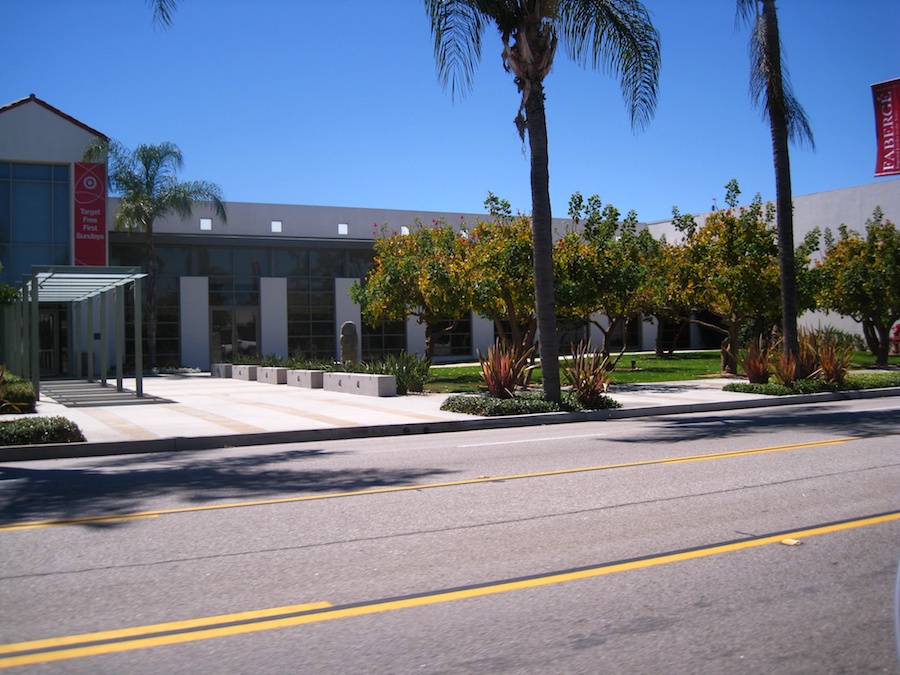Lunch With Our Son Joe And A Visit To Bowers
We had lunch at Tangata with Joe, our son, who works in the local area. Great way to start the day! We then went to see the current exhibits which were quite interesting.
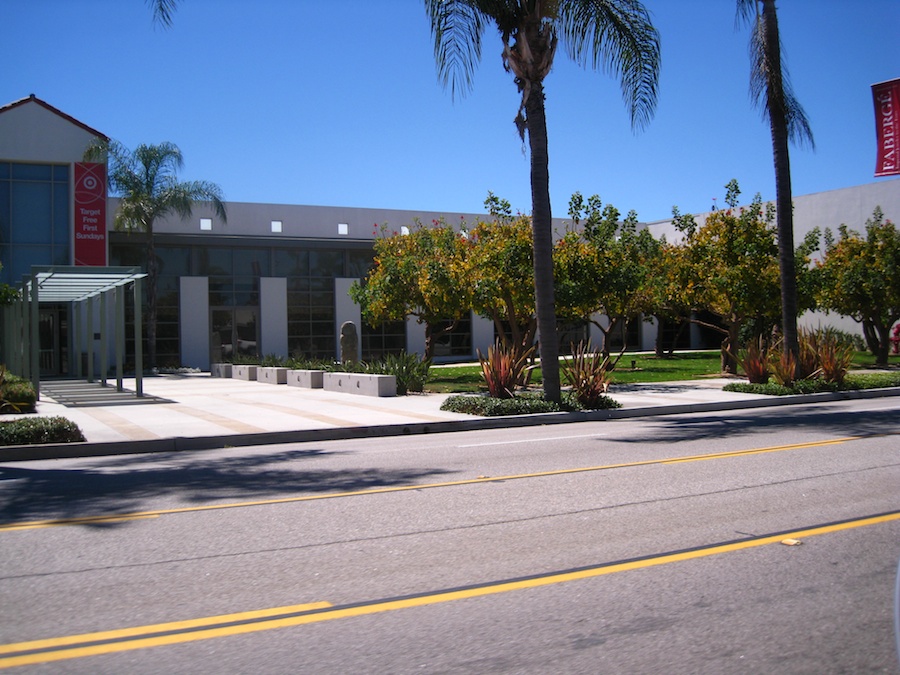
Street view
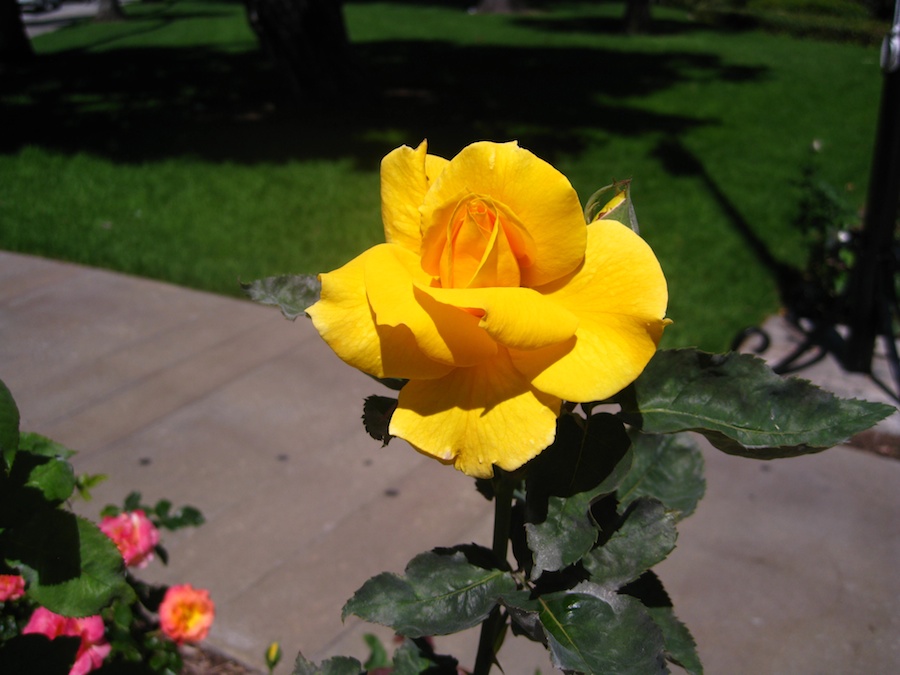
Great rose garden at the entrance
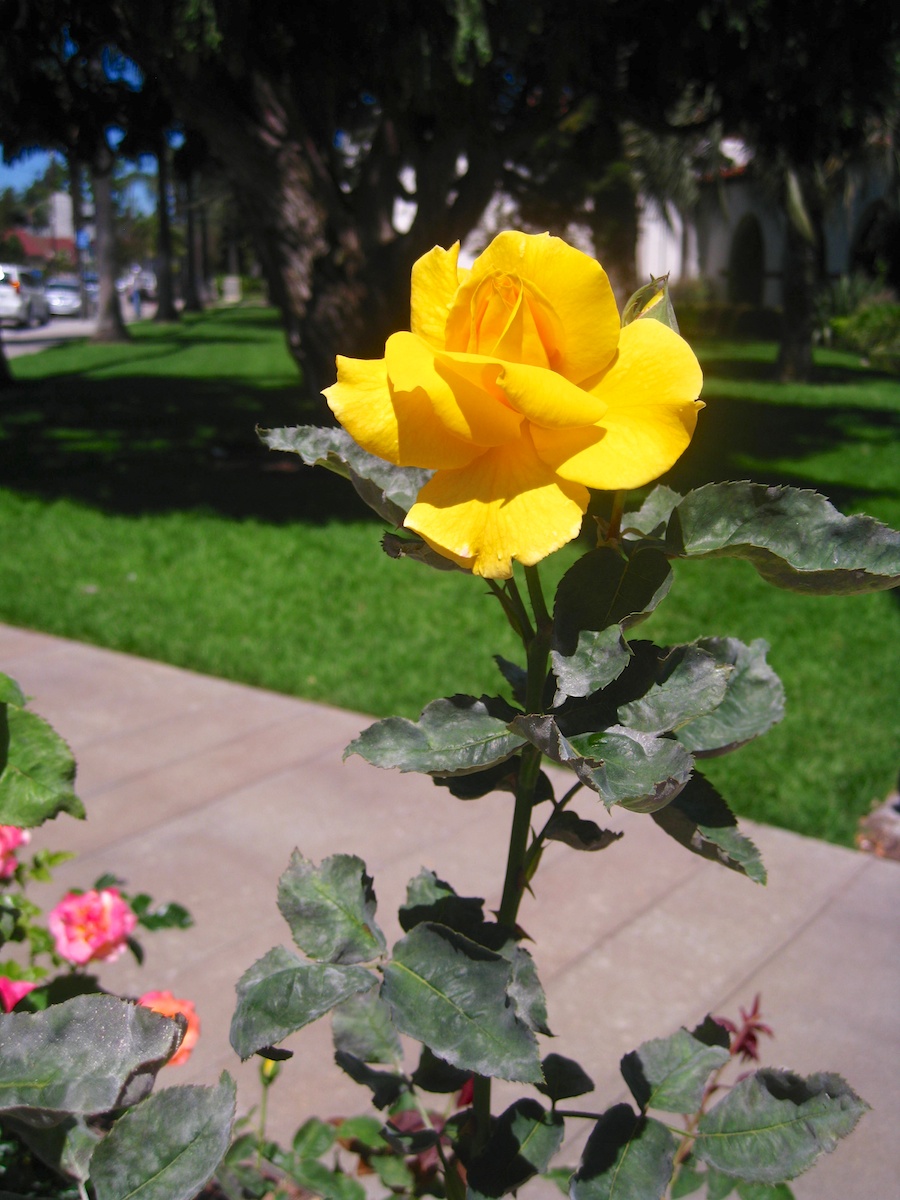
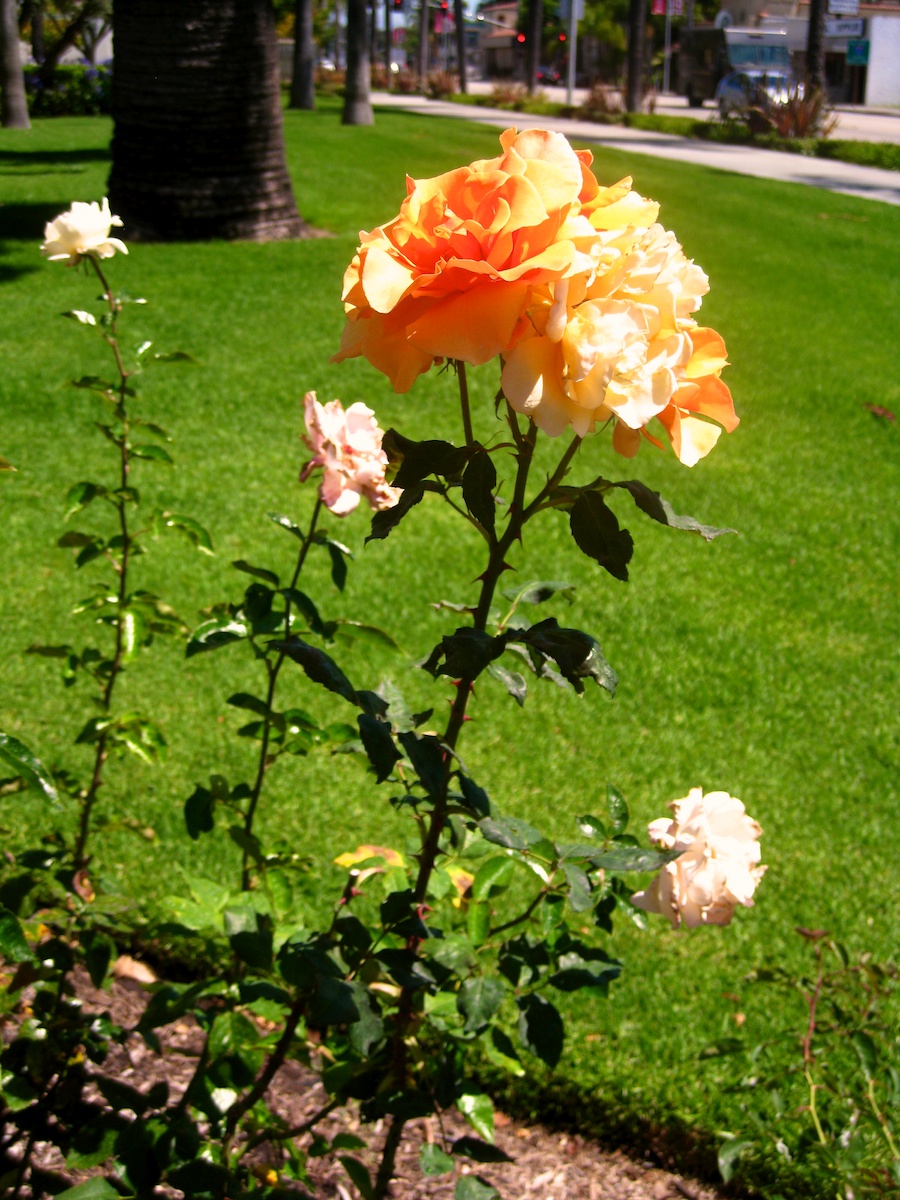
Mother Nature is quite amazing


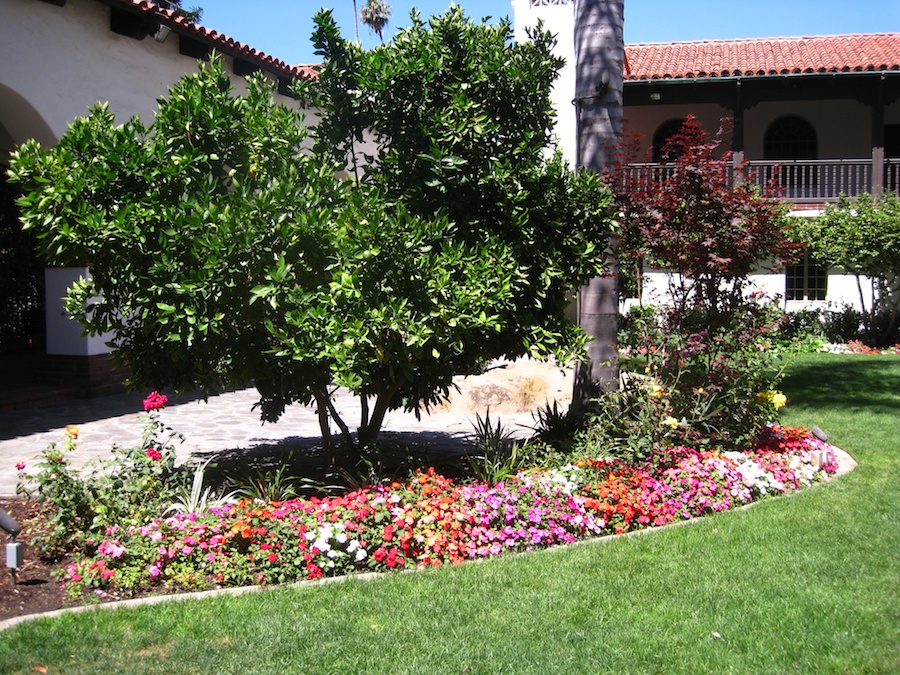
House of Fabergé

Did You Know? -
The House of Fabergé has a reputation for turning the everyday into the extraordinary. Perhaps best known for Imperial Easter Eggs created for the Russian Royal family, the House of Fabergé also fashioned jewelry and luxurious gifts for many ruling families of Europe, as well as other wealthy patrons. Marvel at exquisite objects produced by the Fabergé workshop at its peak, including personal gifts to the Tsar and Tsarina, an extravagant tiara, the magnificent “Fire Screen” picture frame, and the famed “Nobel Ice Egg,” one of the few “Imperial-styled” eggs in private hands. From elegantly simple to breathtakingly ornate, the jewelry, clocks, picture frames, boxes and eggs in this collection have been thoughtfully selected to exemplify extraordinary materials and workmanship.
In recent years, the McFerrin Collection has become one of the world’s most important private collections of Fabergé. While many of the pieces in this collection have been featured individually in other exhibitions and publications over the past 60 years, this is a rare opportunity to see this magnificent collection.
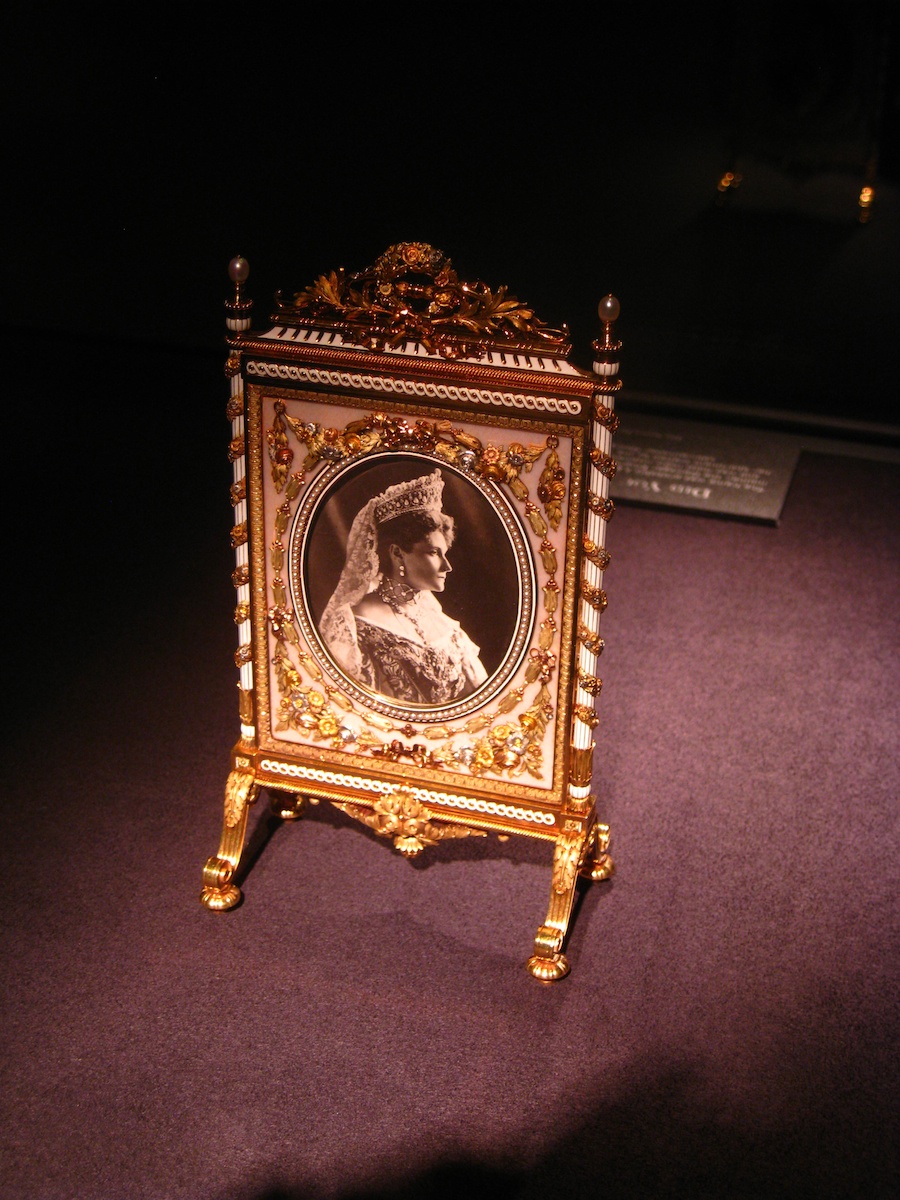
The work must be seen in the meuseum to be totally appreciated
This intricately decorated picture frame (made between 1908-1917) of gold, platinum and enamel is meant to be viewed from both sides and is arguably one of the finest examples of gold work ever produced by Fabergé. One side features a photograph of Tsar Nicholas II, and the other his wife, Empress Alexandra Feodorovna. This was probably a gift from the Tsar to his mother, the Dowager Empress Maria Feodorovna. The form was most likely inspired by a fire screen, created by George Jacob that was in her apartment.
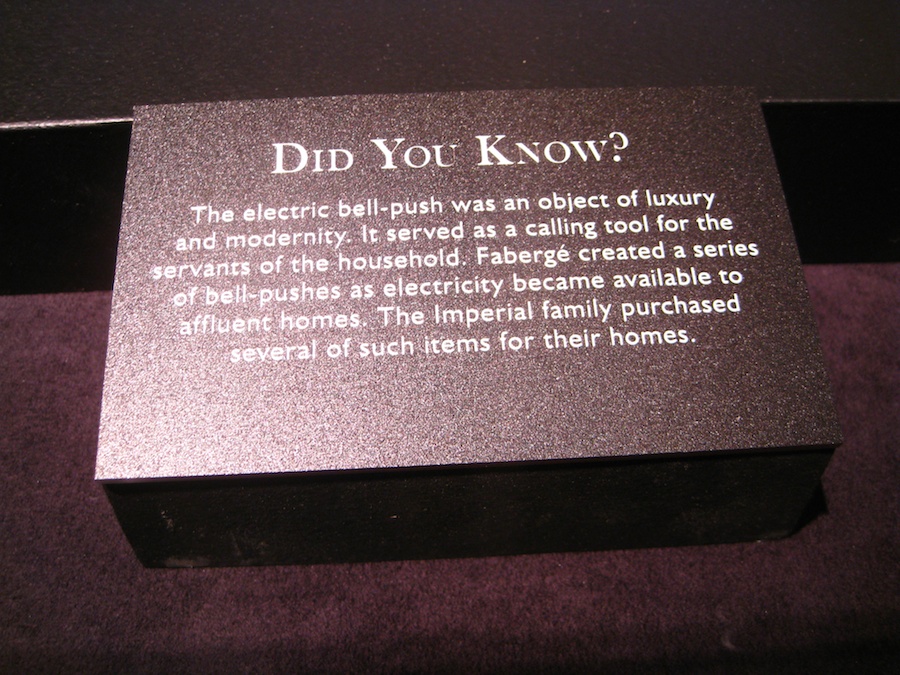
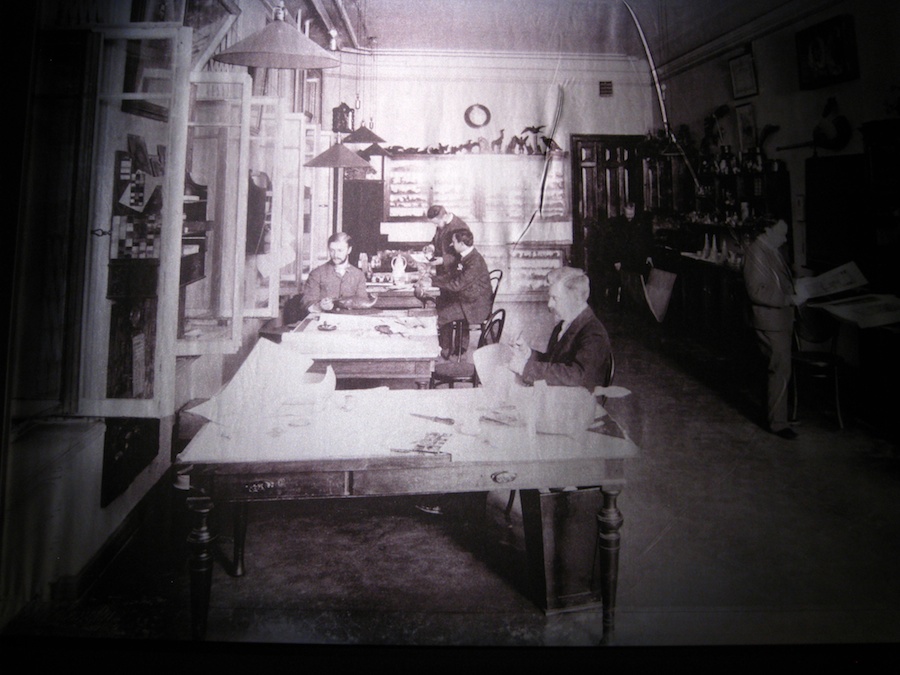
In the workshops
Did You Know? - The House of Fabergé won international awards and became Russia's largest jewellery firm employing some 500 craftsmen and designers. In the early 20th century, the headquarters of the House of Fabergé moved to a purpose-built, four-storey building in Bolshaia Morskaia. Branches were also opened in Moscow, Odessa, Kiev and London. From England, the company made annual visits to the Far East.
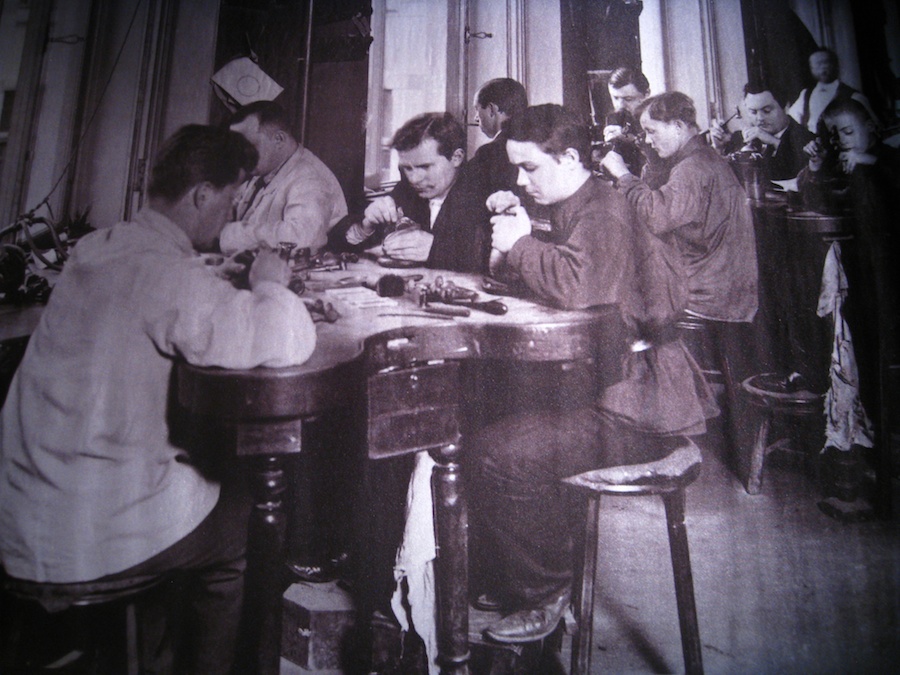
Amazing talent at work
Did You Know? - The House of Fabergé (French pronunciation: [fabɛʁʒe]) (Russian: Дом Фаберже) is a jewellery firm founded in 1842 in St. Petersburg, Imperial Russia, by Gustav Faberge, using the accented name "Fabergé"; Gustav was followed by his son Peter Carl Fabergé, until the firm was nationalised by the Bolsheviks in 1918.
The firm has been famous for designing elaborate jewel-encrusted Fabergé eggs for the Russian Tsars and a range of other work of high quality and intricate details. In 1924, Peter Carl's son Alexander with his half-brother Eugène opened Fabergé et Cie in Paris, making similar jewellery items, but adding the city to their rival firm's trademark as "FABERGÉ, PARIS".
In 1937, the brand name "Fabergé" was sold and then re-sold in 1964 to cosmetics company Rayette Inc., which changed its name to Rayette-Fabergé Inc. As the name was resold more times, Fabergé companies (such as Fabergé Inc.) launched clothing lines, the cologne Brut (which became the best-selling cologne at the time), the perfume Babe, hair products, and undertook film production.
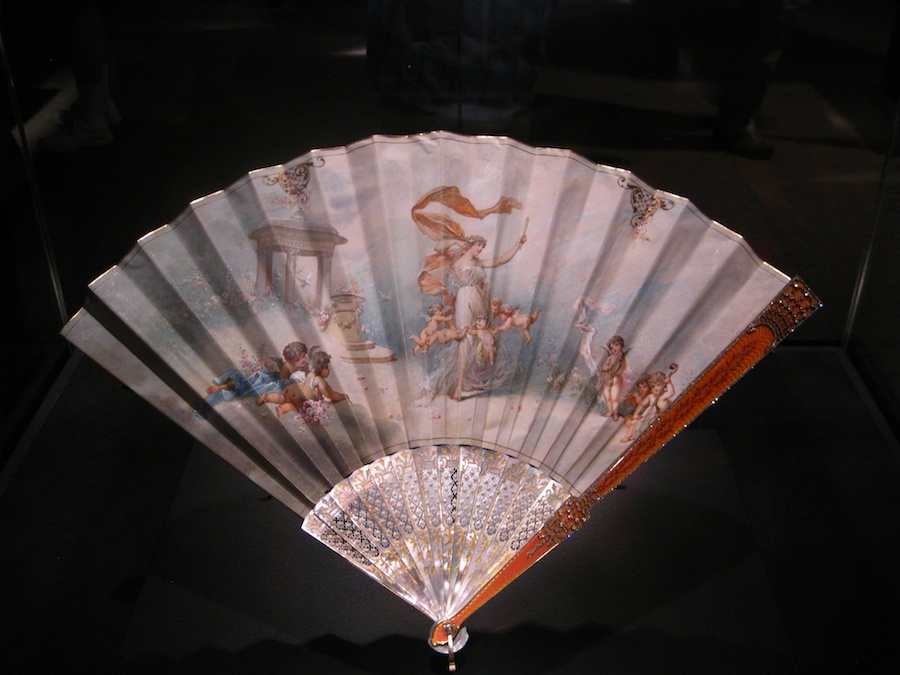
Faberge fans were quite popular

A salt cellar
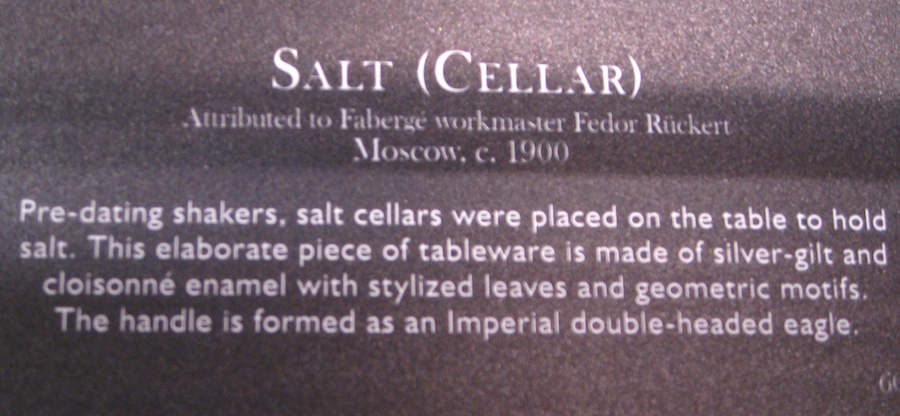
Did You Know? - During the Middle Ages , when salt was a valuable commodity, salt would be kept on the table in elaborate metal or glass dishes as a status symbol . Being granted the favor of sharing the salt cellar of the host was seen as a sign of great respect. The social status of a guest was often measured simply by judging the distance at which the person sat from the master's large salt cellar placed near the middle of a long table: the phrases above the salt and below the salt alluded to the former custom of seating persons of higher rank above and those of lower rank below that container. In the more recent past, salt was still very costly and precious. For example, before refrigeration salt was the main ingredient for preserving food.

Intricate work of art


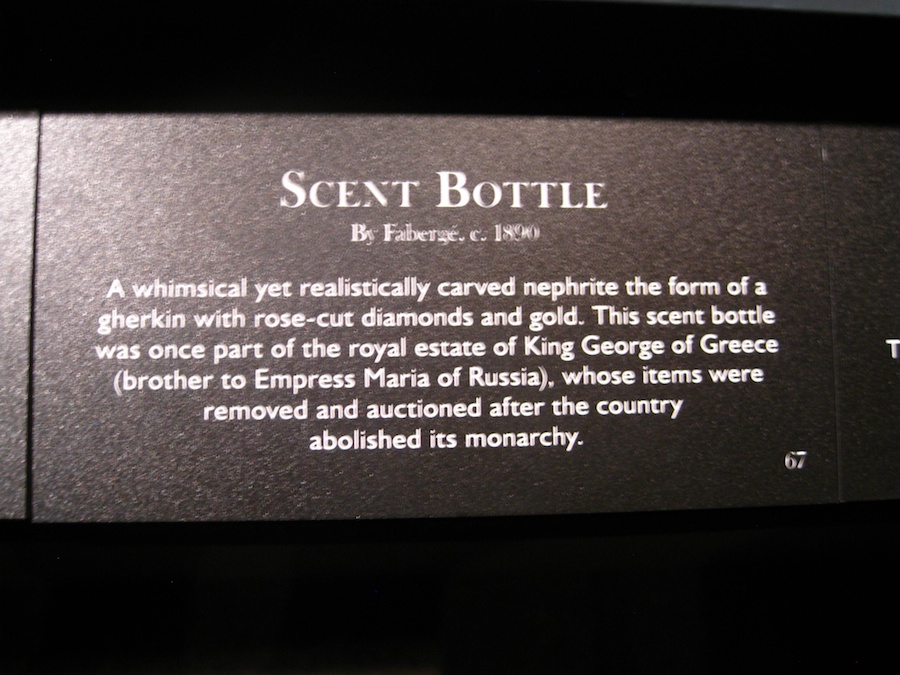
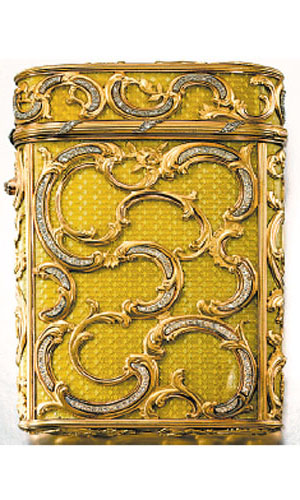
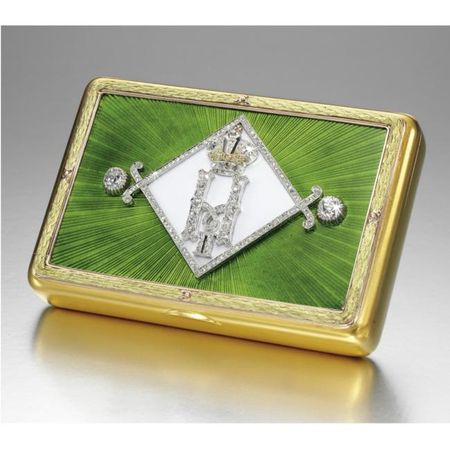
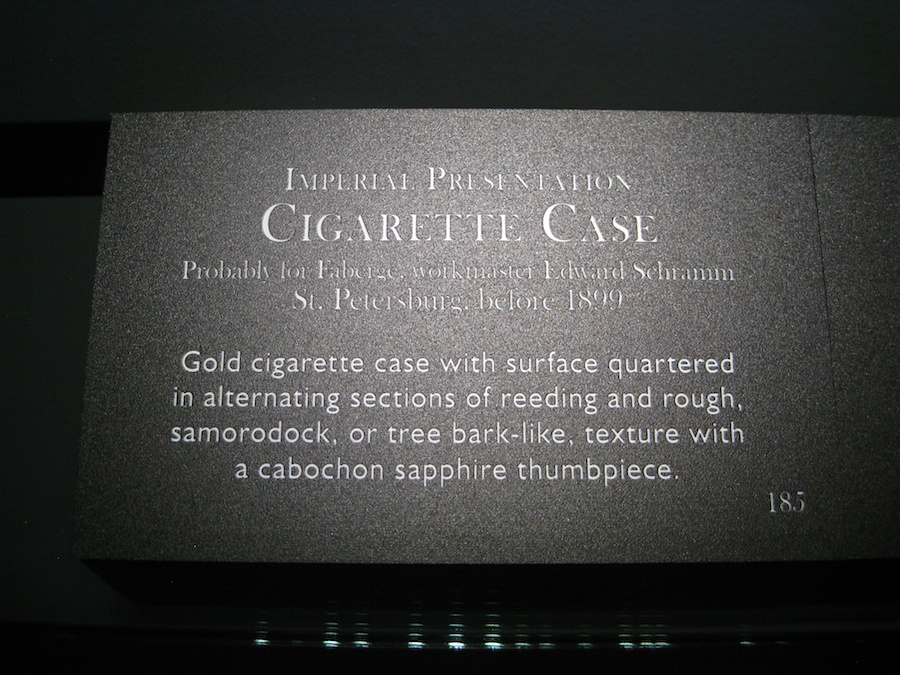
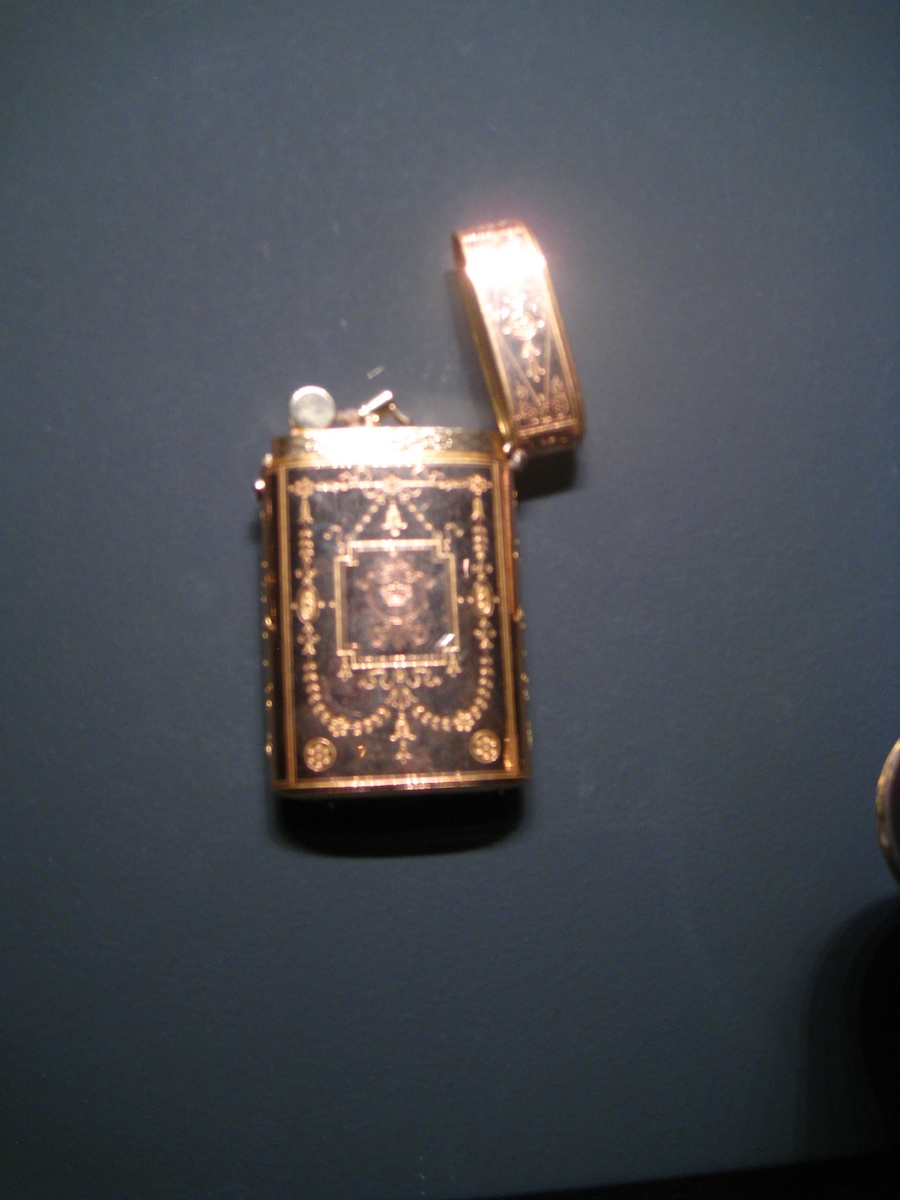
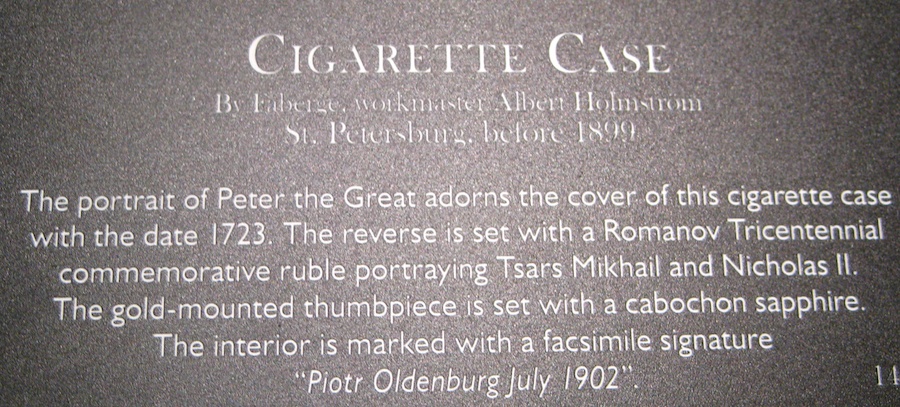
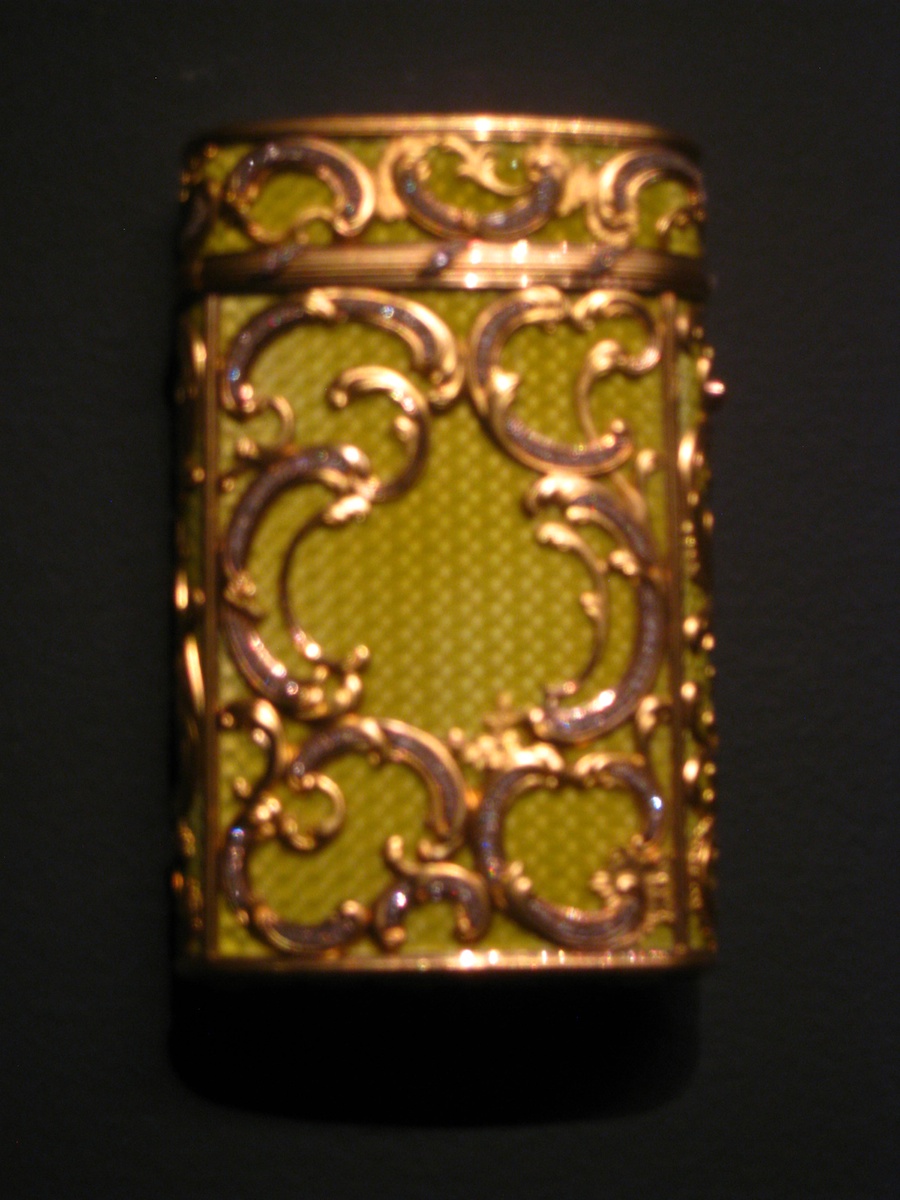

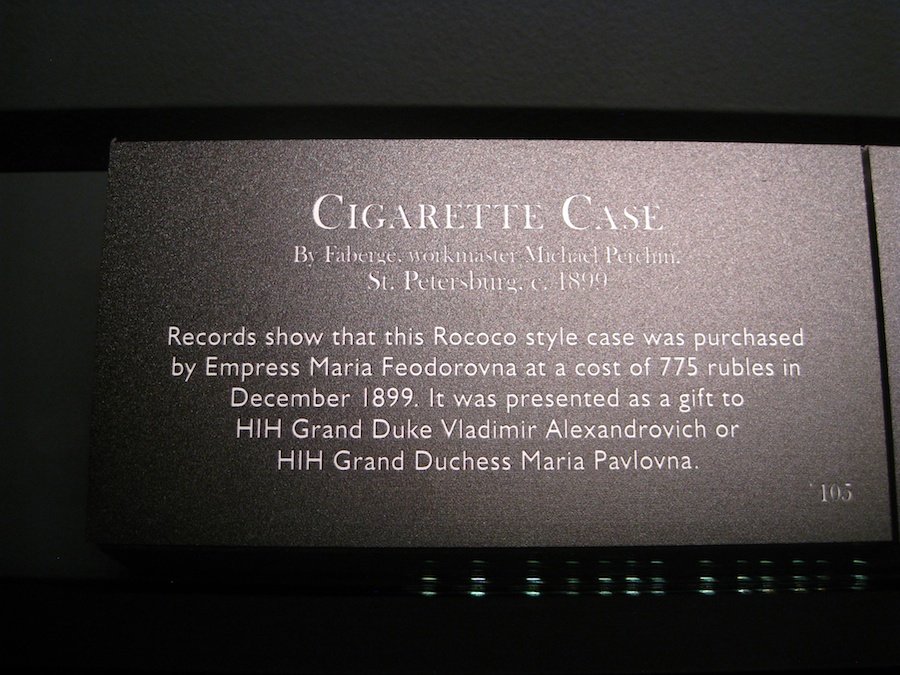
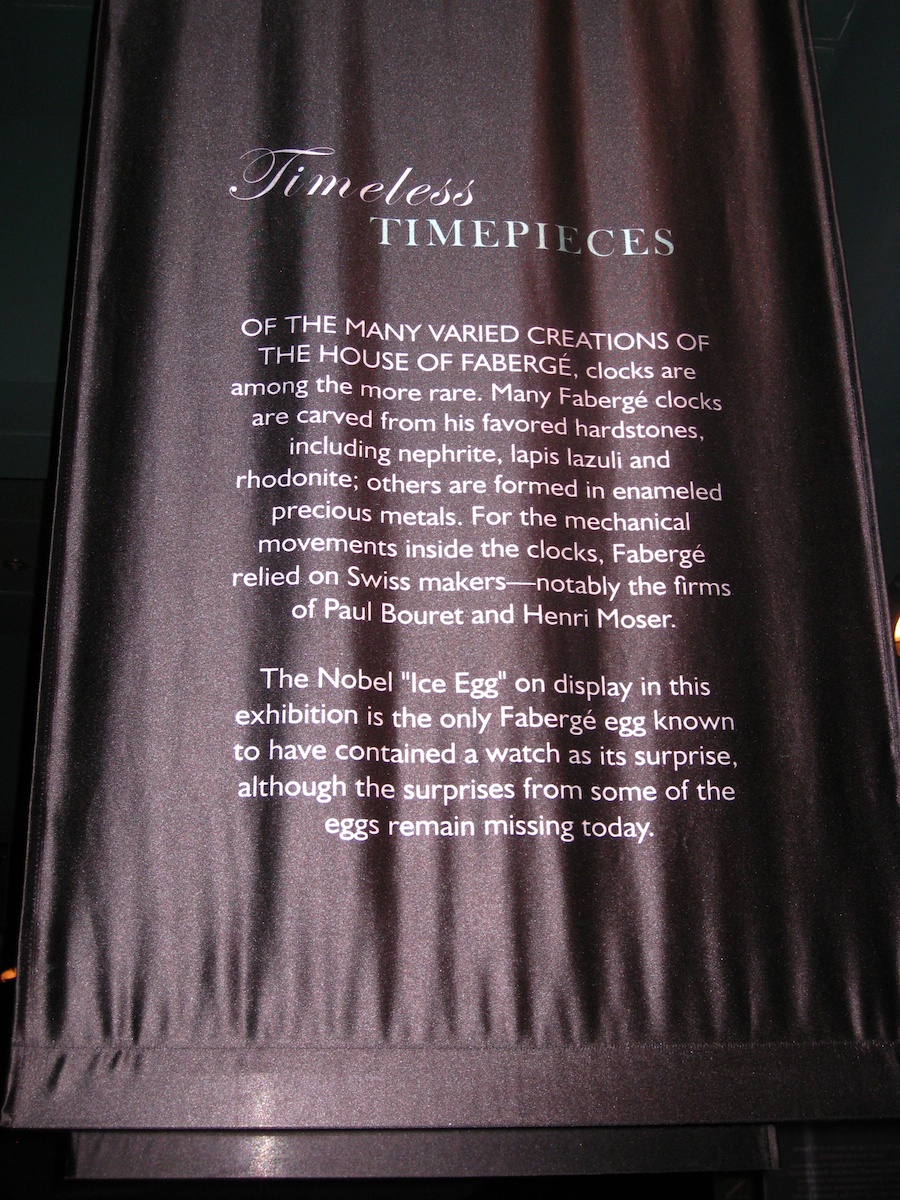
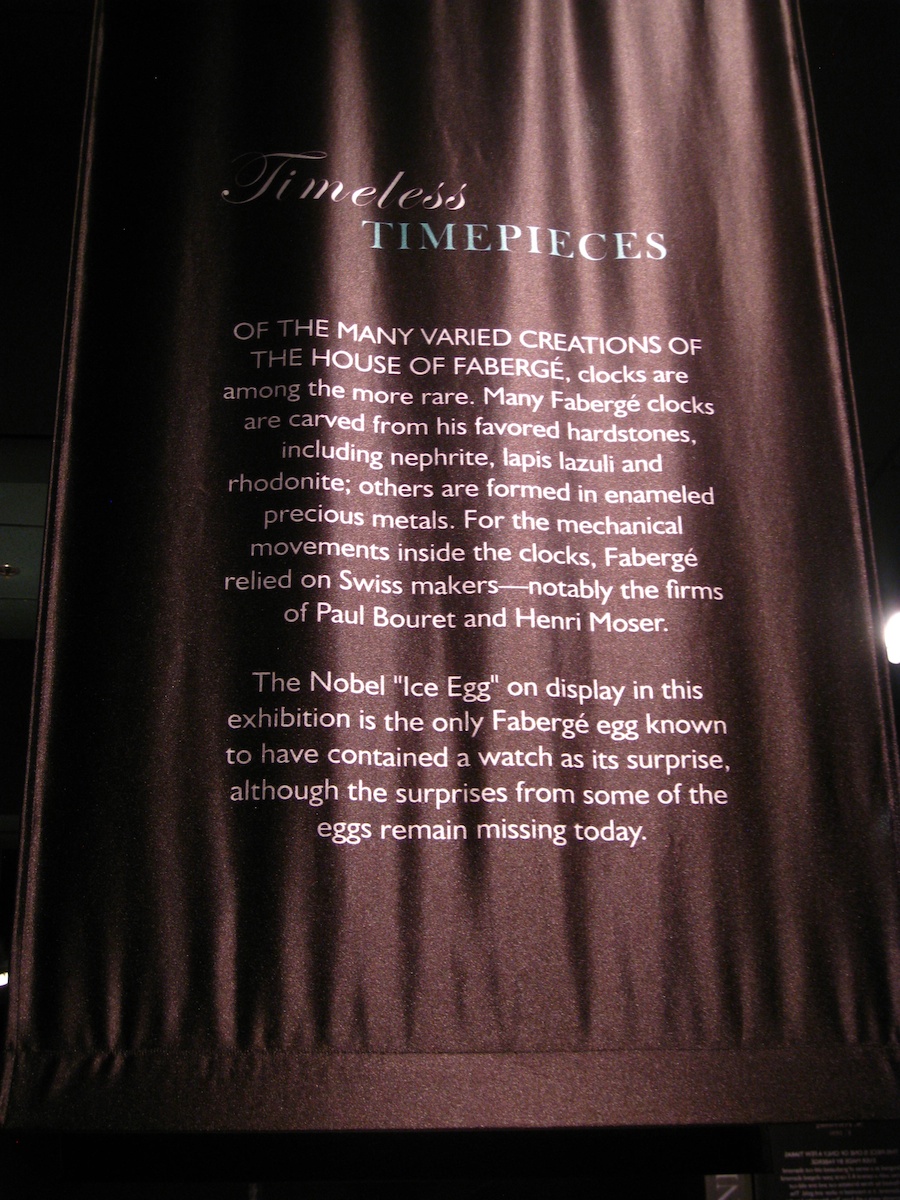
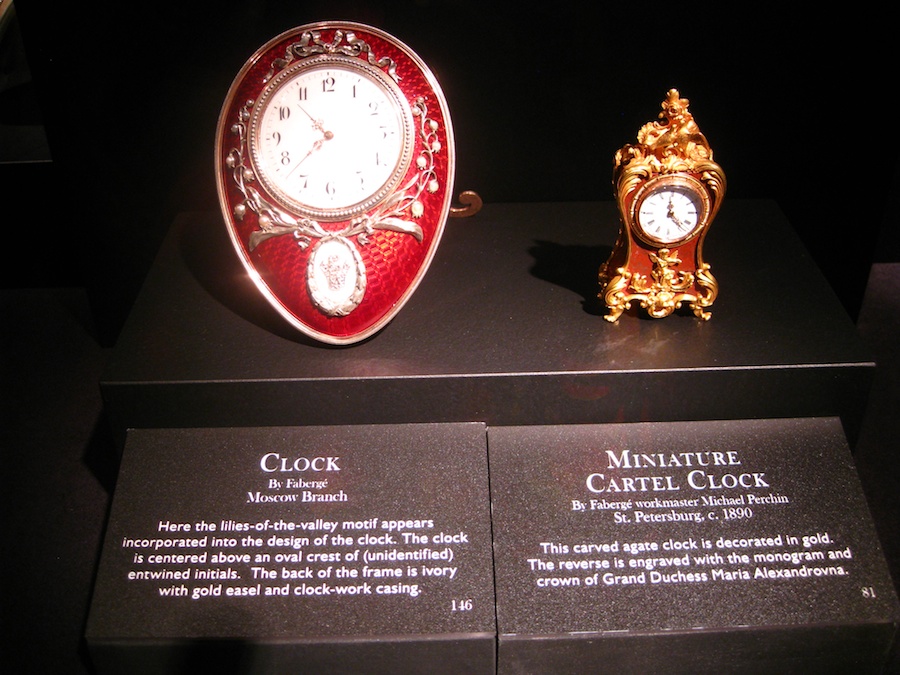


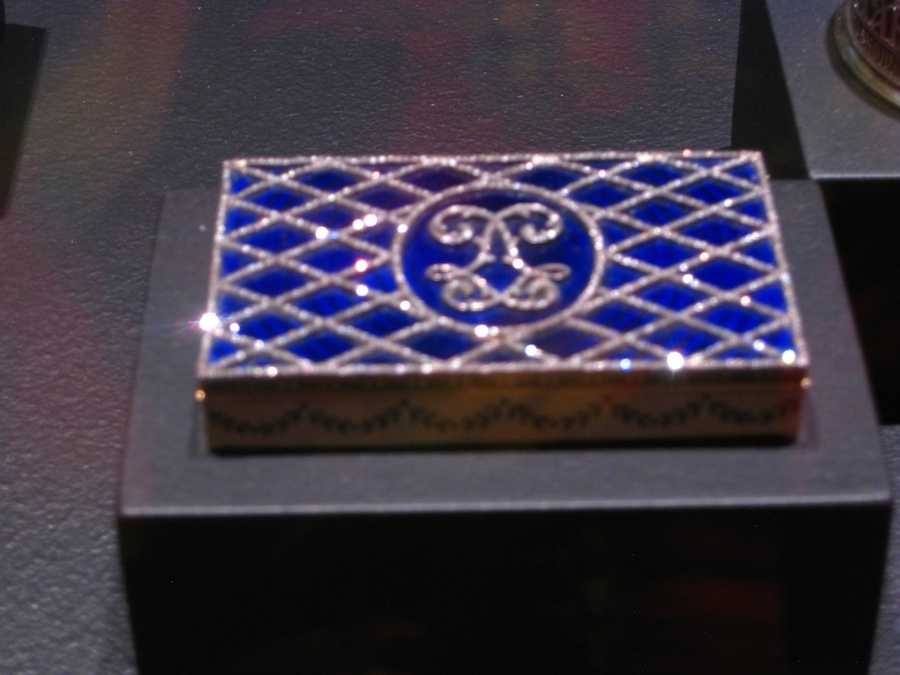


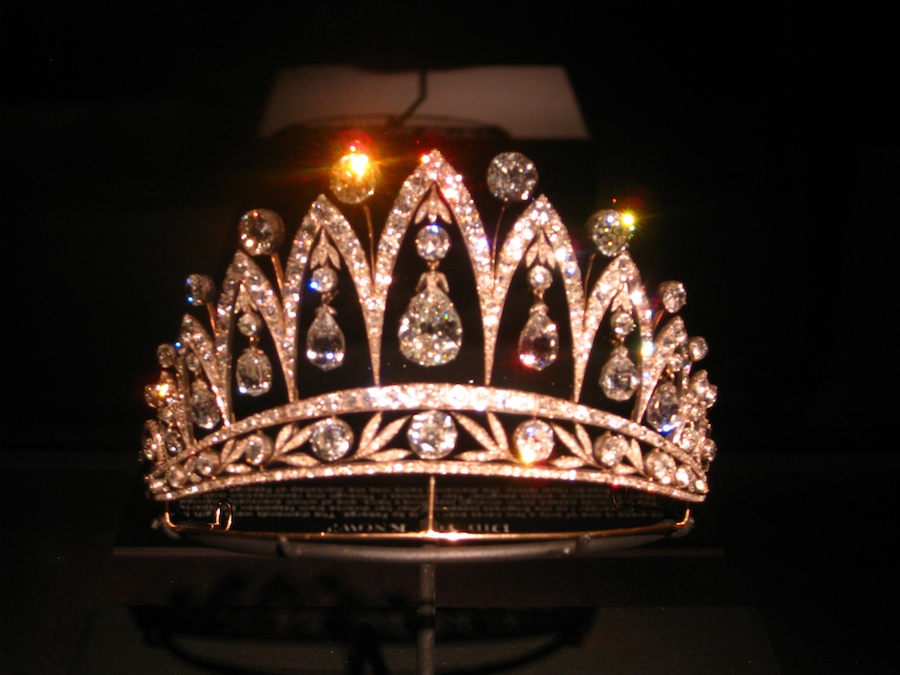

Gold Of California
Did You Know? - Visitors will see immeasurable riches in these two exhibitions including: stunningly beautiful specimens of native California gold; coins, bullion, and recovered treasure from sunken ships.
This exhibition highlights some of the finest examples of native California gold as it is found in its natural form as leaves, crystals, and nuggets. The more Mojave Nugget, weighing over 10 pounds and the largest gold nugget ever to be found in California is included here. The gold specimens are supplemented with very rare items from the gold rush era, including books, maps, and instruments.
A selection of artifacts focuses on the treasure from the SS Central America, sometimes referred to as the Ship of Gold. This ship was carrying 35,000 pounds of gold from the California goldfields to the national Mint in Philadelphia when it sank off the coast of South Carolina in 1857 and took the lives of 400 passengers. The loss of so much value in gold was so severe that it caused a major economic panic for the United States. The ship rested undisturbed until recovery teams located it in 1987. The treasure was valued at nearly 200 million dollars.
And finally, the exhibition features gold specimens from one of the most successful California gold mines of the 20th century, the Oriental Mine located near the small town of Alleghany in Sierra County. Today, there are few commercial gold mines still working in California, and the Oriental is a wonderful example of how gold can still be recovered from the ground 162 years after the California gold rush.
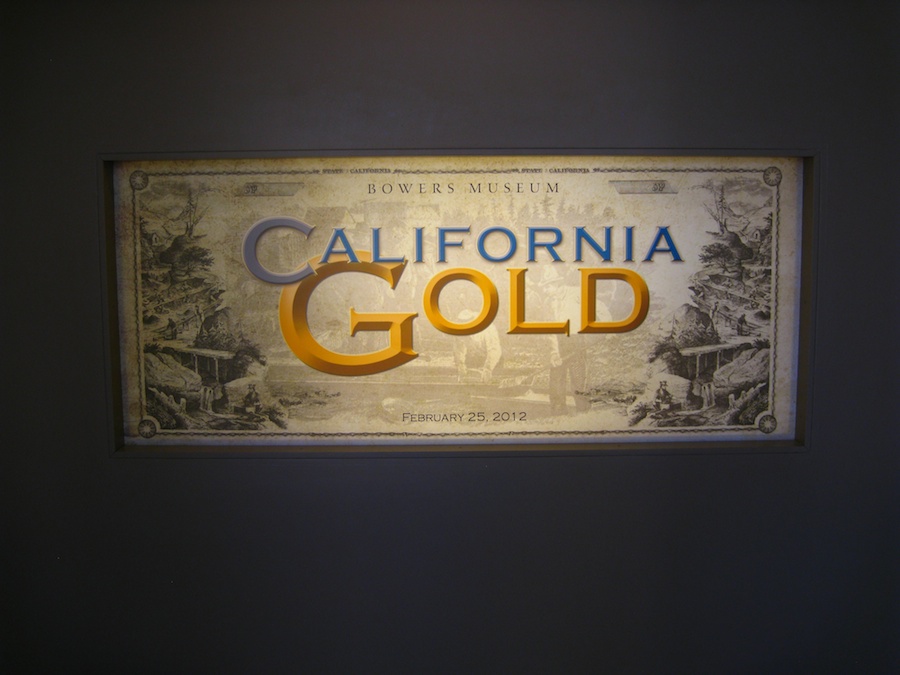
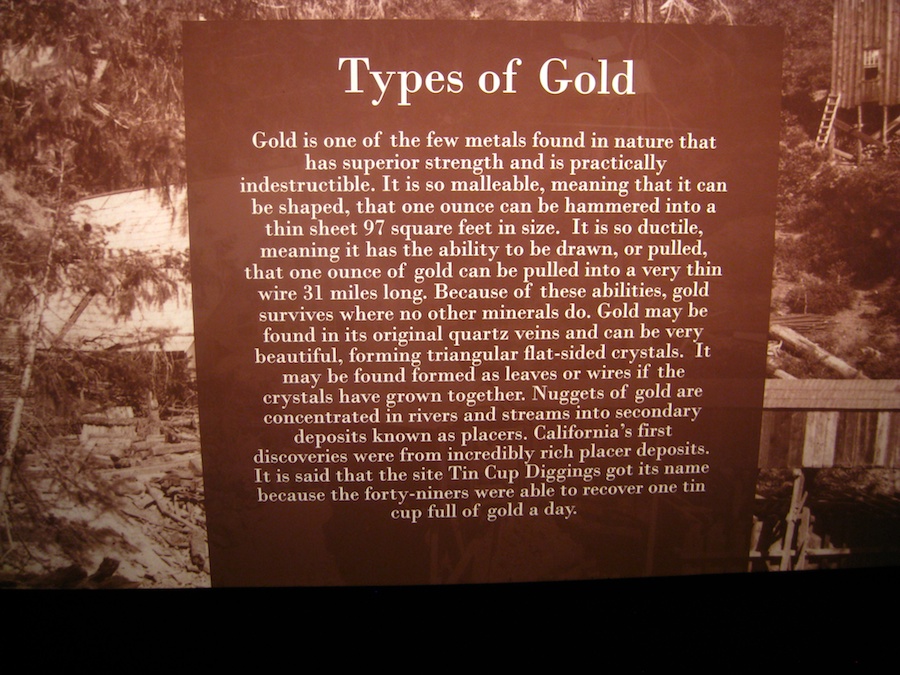

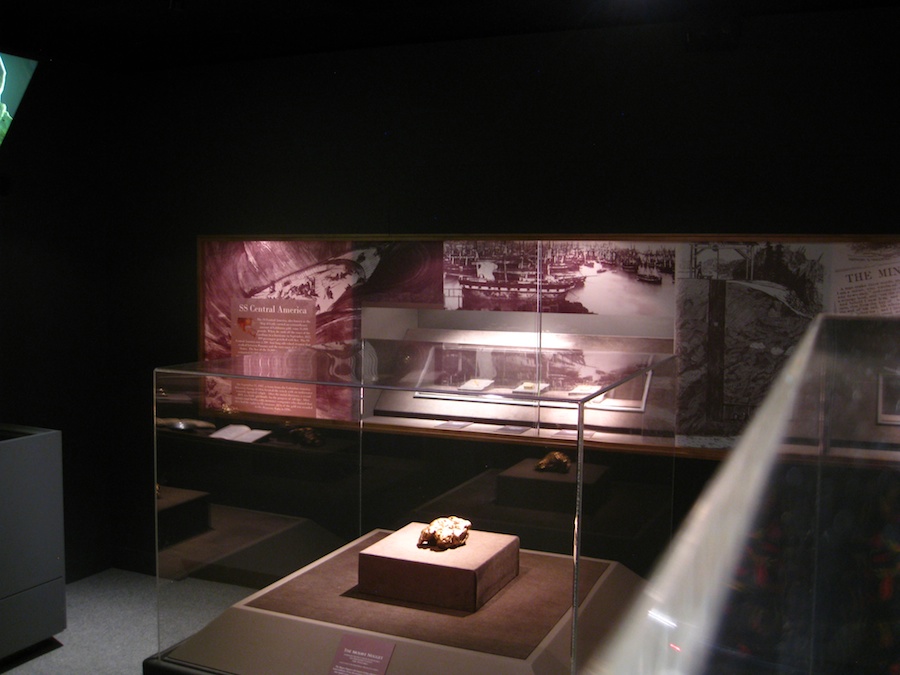



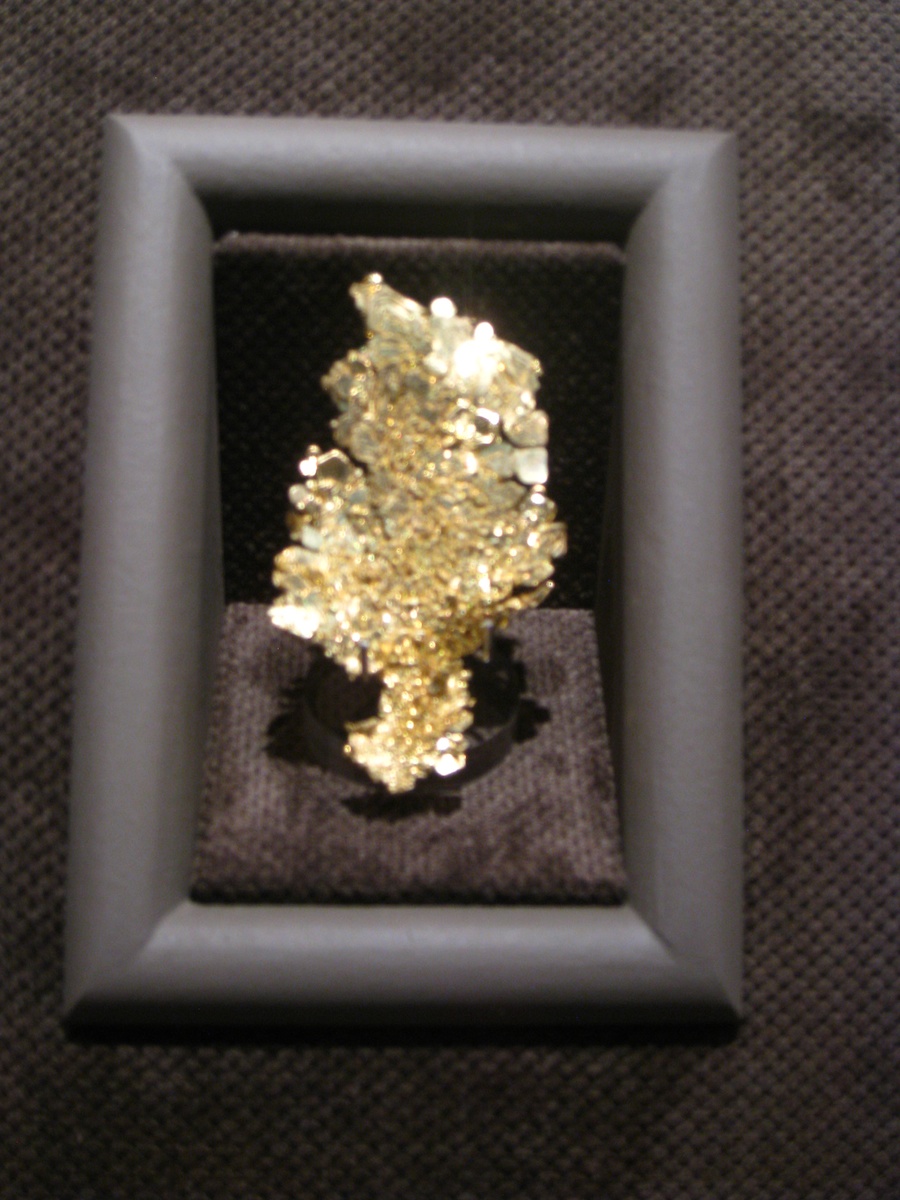
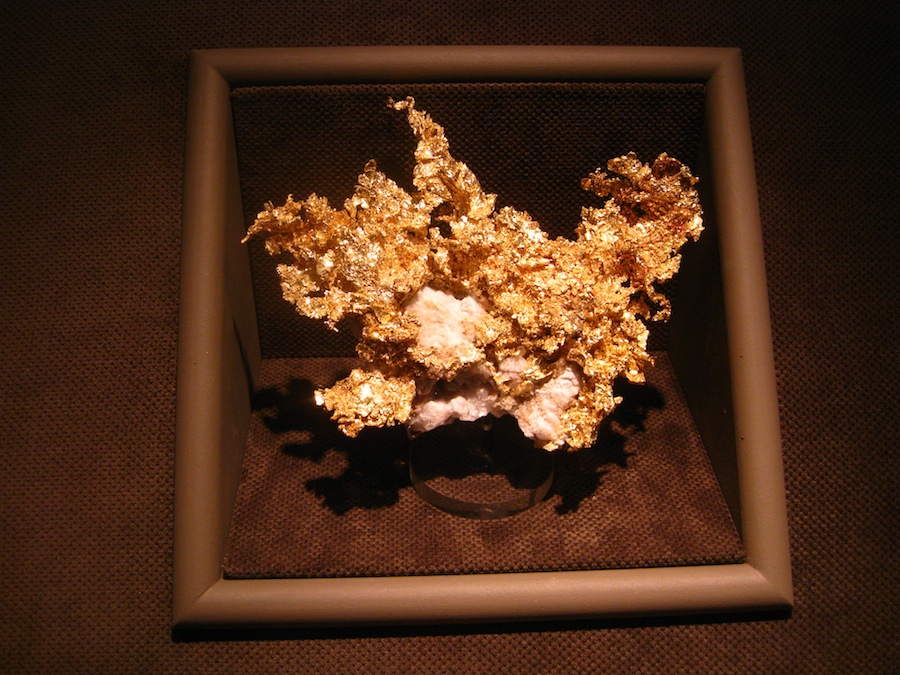
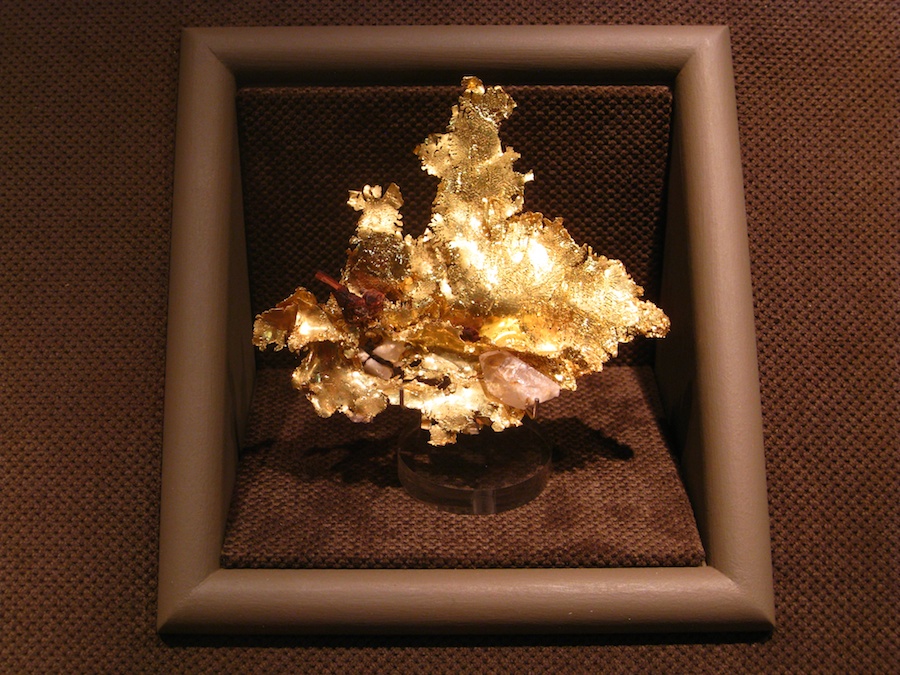
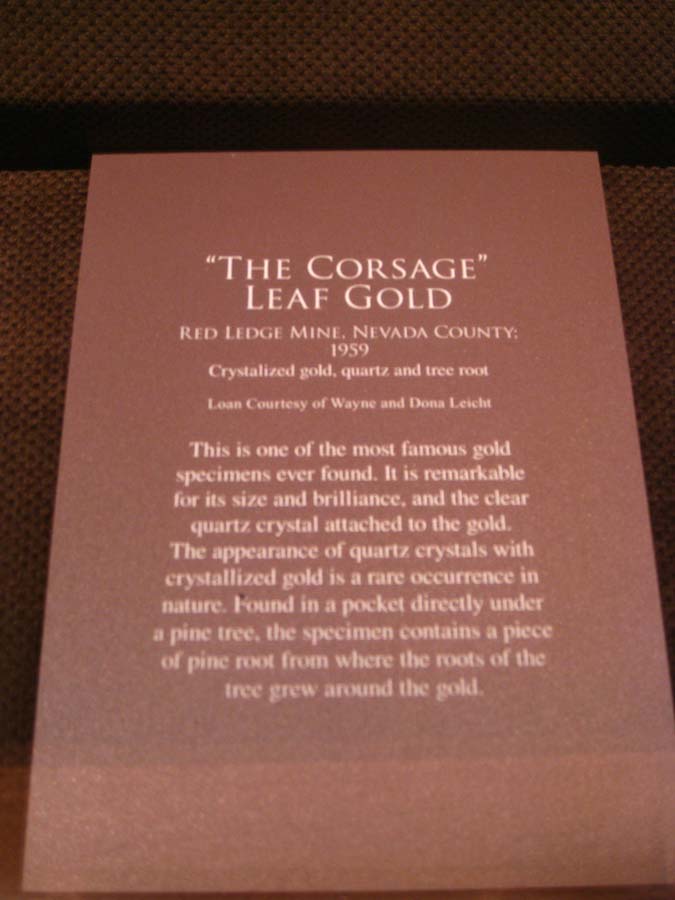

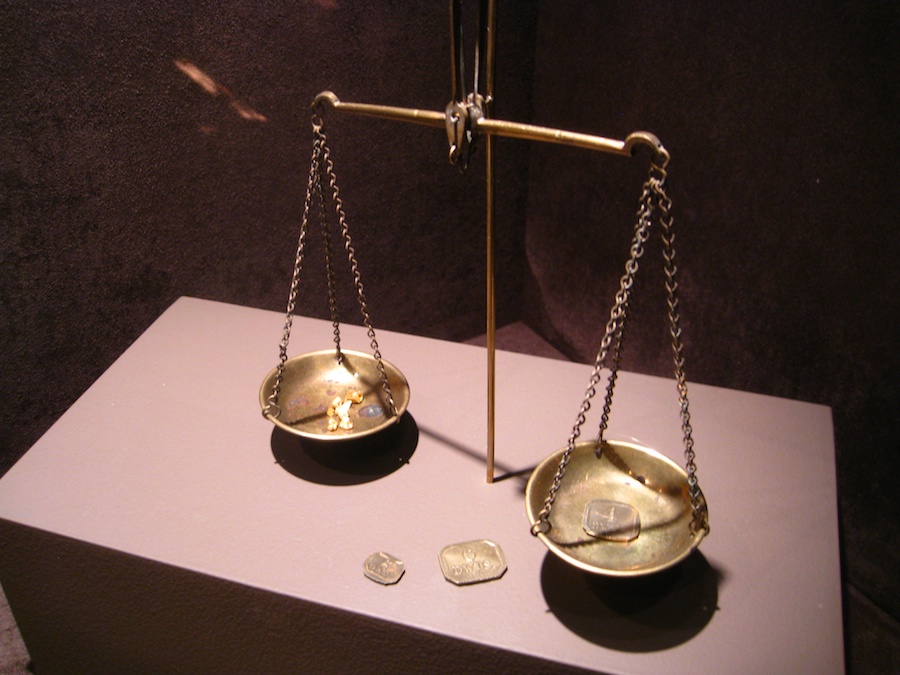
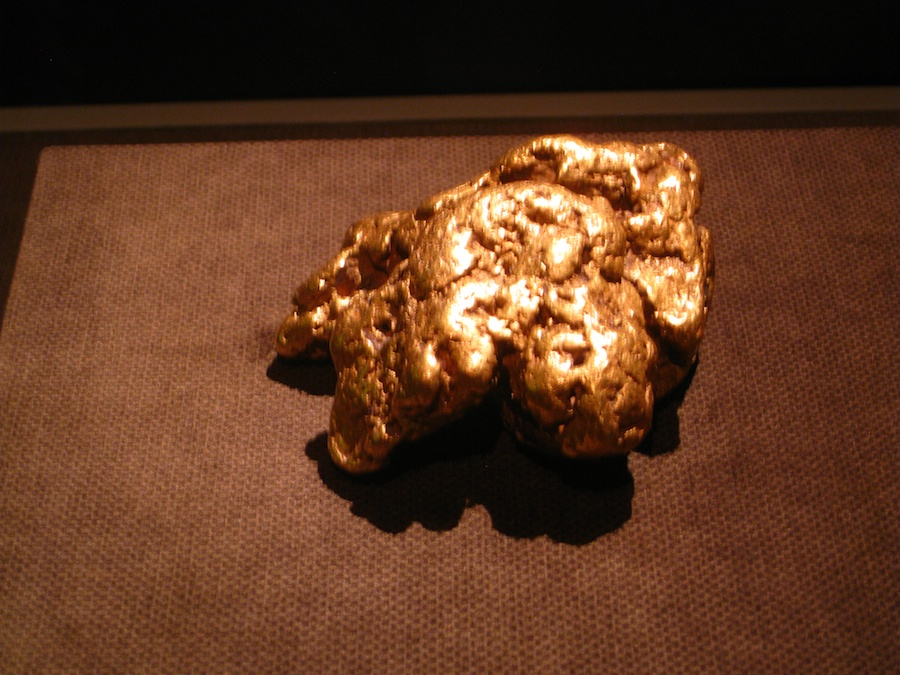
Did You Know? - The Mojave Nugget is the largest known gold nugget ever found in California, United States. It was found in the Stringer district near Randsburg by prospector Ty Paulsen in 1977 using a metal detector. The nugget, which weighs 156 troy ounces (4.9 kg), is part of the Margie and Robert E. Petersen Collection of gold nuggets that was donated to the Natural History Museum of Los Angeles County.
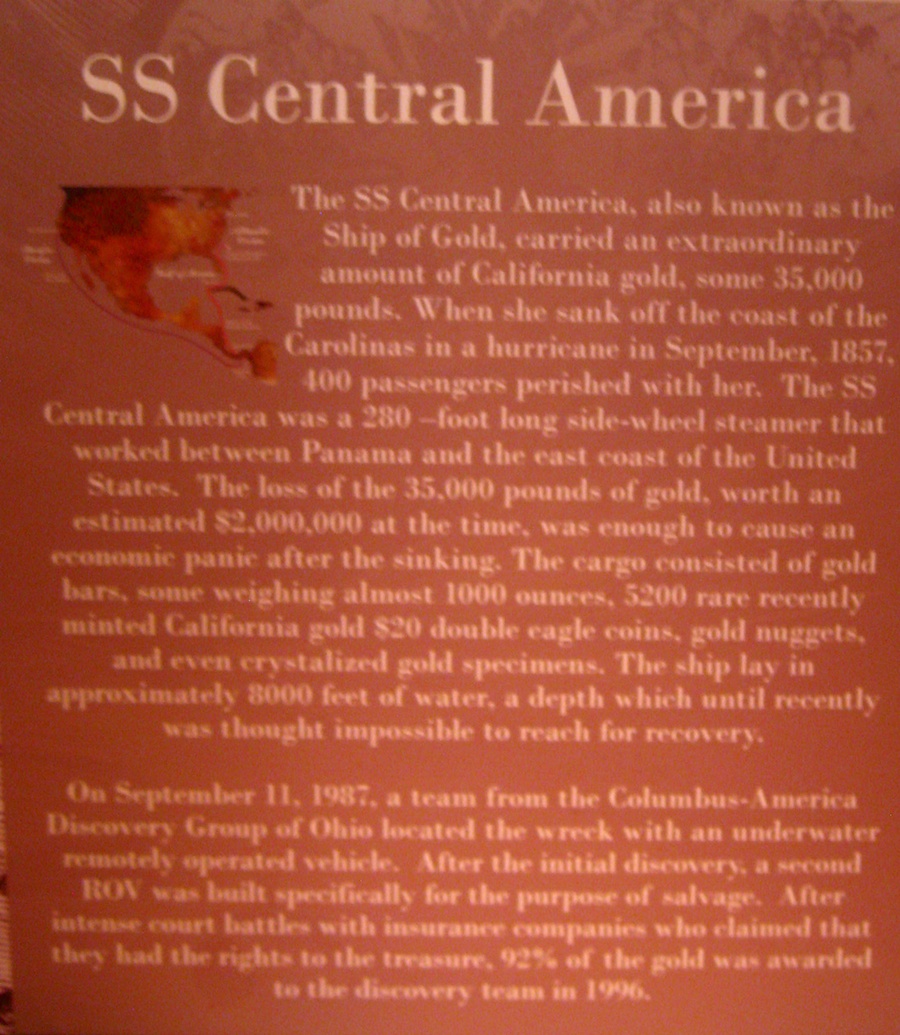
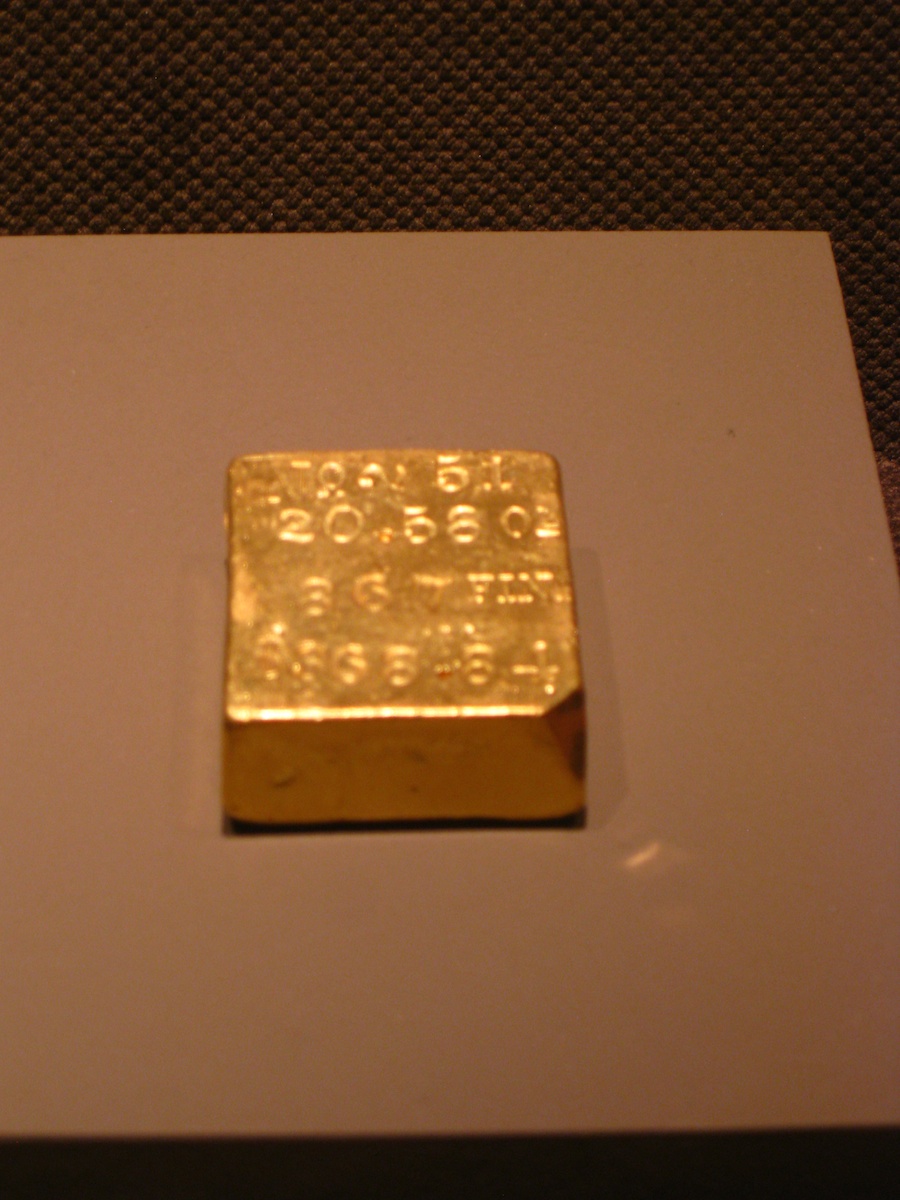
See You Later
